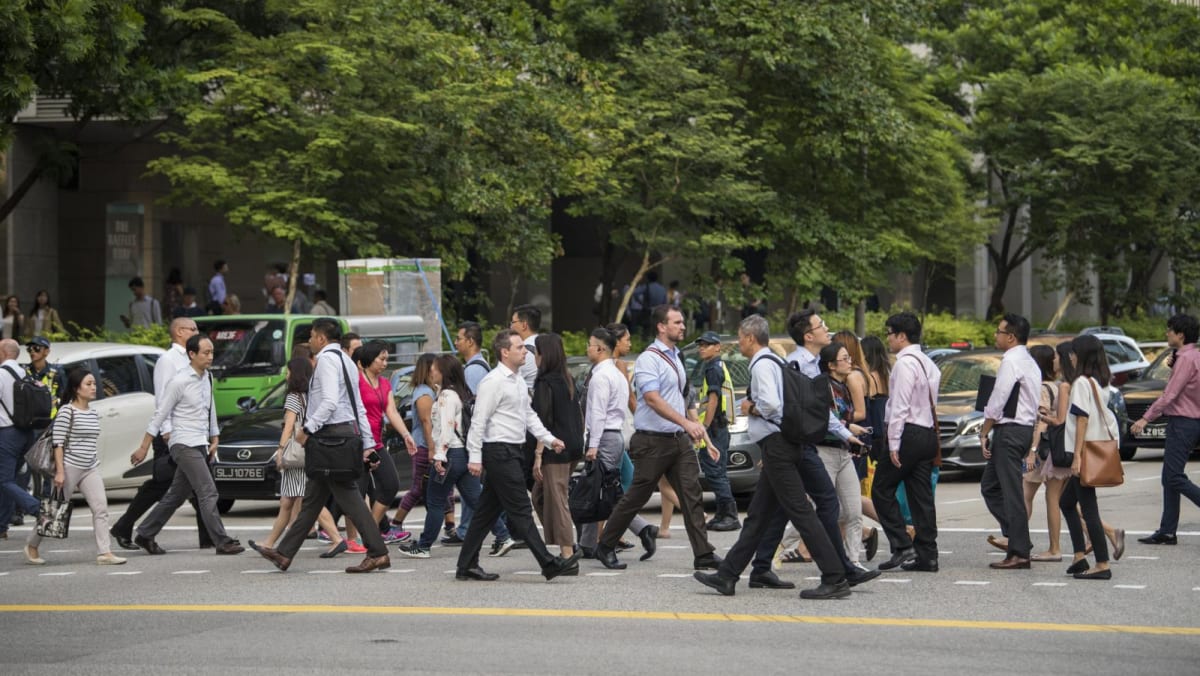SINGAPORE: Recent moves to raise the re-employment age in order to spur the employment of senior workers have not had any “diminishing returns”, a study by Ministry of Manpower (MOM) economists found.
The study, which looked at the employment outcomes of different cohorts of seniors who are impacted by differing statutory retirement and re-employment ages, found that the most recent move in 2022 to raise the re-employment age from 67 to 68 led to an increase in the employment rate of senior workers of 0.7 percentage points.
In 2024, the employment rate for seniors aged 65 to 69 was 49.1 per cent.
“The positive impact of the increase in 2022 on employment was similar to that found for the earlier increase in 2017 … suggesting that the policy of raising the (re-employment age) had not reached diminishing returns,” the authors wrote in a feature article released on Tuesday (Aug 12) as part of the latest Economic Survey of Singapore.
The study also found that senior workers appear to have “mentally anchored” their retirement decisions to the re-employment age rather than the retirement age.
Increasing the retirement age in 2022 from 62 to 63 only raised the employment rate of senior workers by 0.4 percentage points.
Under the Retirement and Re-employment Act, employers are required to offer re-employment to eligible senior workers until the statutory re-employment age.
The Act also protects senior workers from age-related dismissals before they reach the statutory retirement age.
Singapore’s goal is for the retirement age to be 65 and the re-employment age to be 70 by the year 2030.
In 2017, the re-employment age was raised from 65 to 67. In July 2022, both benchmarks were increased – the retirement age from 62 to 63, and the re-employment age from 67 to 68.
With Singapore’s increasing life expectancy and ageing population, the policy protects senior workers and enables them to work longer if they wish to, while allowing employers to meet their manpower needs, the report said.
“At their currently defined ages, the (retirement age and re-employment age) remain relevant as they collectively provide legislative protection and set the social norms of retirement for senior workers.”
Next year, the retirement and re-employment ages will be raised to 64 and 69 respectively.
METHODOLOGY AND RESULTS
The study compared three groups of senior workers. The first included those who were eligible for the new retirement and re-employment age because they were born on or after Jul 1, 1960 and Jul 1, 1955.
This group would receive legislative protection and may also remain in employment as social norms shift.
The second group referred to those born in the same years, but who were not affected by the raising of the statutory age because of the timing of the implementation. These workers could still be affected indirectly by changing social norms, though they would not receive legislative protection.
Workers born in the years just before 1960 and 1955 were used as the control group.
The study found that the increase in the employment rate in the first group due to the raised retirement age was not sustained as there was no statistically significant difference in employment rate between the first and control groups beyond 63 years of age.
The increase in the retirement age also did not affect the employment rate of the second group who were not directly covered by the change.
The authors said the increase in the retirement age likely affected employment outcomes mainly through legislative protection.
Raising the retirement age delayed the exit of workers who would not have been eligible for a re-employment offer and would have been retired, and workers who would have been offered a lower re-employment salary and would have left because they did not want to accept the lower wage.
The absence of any impact on the second group suggested that the retirement age did not affect employment outcomes through the social norms channel, the study said. “This was likely because senior workers would have mentally anchored their retirement decisions on the (re-employment age).”
Workers who were employed in outward-oriented sectors such as manufacturing and wholesale trade and who lived in executive flats, condominiums and other apartments saw a bigger impact from the increase in the retirement age.
That may be because outward-oriented firms prefer younger workers but had to keep senior workers for a year longer, and those who lived in certain types of housing were more likely to have reached retirement adequacy and would be less willing to accept lower wages from re-employment.
With the higher retirement age, they could maintain their remuneration package and hence, they stayed on in the workforce.













